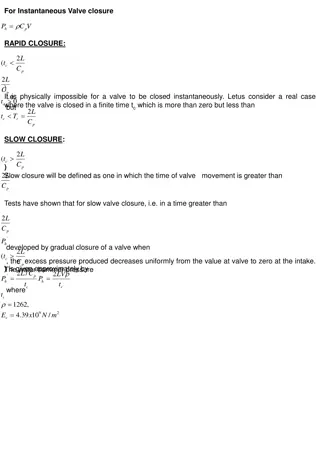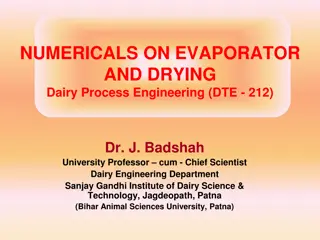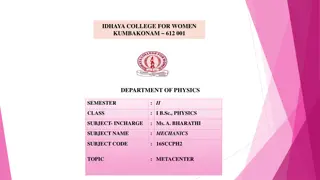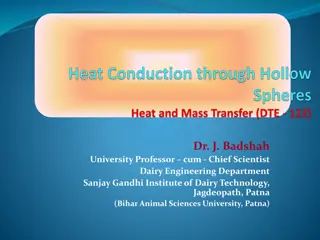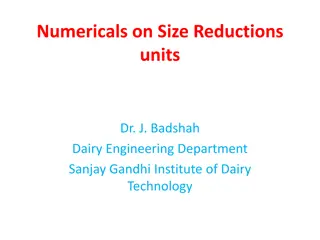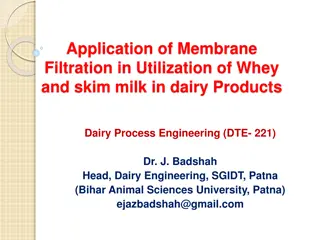Understanding Fluid Mechanics in Dairy Engineering: Applications and Numericals
Explore the application of Bernoulli's theorem in pipe flow, friction losses, and discharge calculations in the context of dairy engineering. Learn about pipe discharging from reservoirs, connecting two reservoirs, and pipes in series through detailed explanations and numerical examples.
Download Presentation

Please find below an Image/Link to download the presentation.
The content on the website is provided AS IS for your information and personal use only. It may not be sold, licensed, or shared on other websites without obtaining consent from the author. Download presentation by click this link. If you encounter any issues during the download, it is possible that the publisher has removed the file from their server.
E N D
Presentation Transcript
By Dr. J. Badshah University Professor-cum-Chief scientist Dairy Engineering Department SGIDT, PATNA (Basu, Patna)
Pipe Discharging from a Reservoir Applying BernoullisTheorems between A and B hL v2/2g H E.G.L. H.G.L. hf A B
Pipe Discharging from a reservoir Applying Bernoullis Theorems equation to points A ( at the joint with reservoir ) and B (At the end of pipe): H = hL+ hf+ V2/2g, hL= Loss of head at the entrance hf= Loss due to friction in the entire length V2/2g = Distance between hydraulic gradient line and energy Gradient line If the entrance to the pipe is flush with the reservoir, hL= 0.5 V2/2g and
Pipe Discharging from a reservoir Frictional head is given by, hf= f L/D (V2/2g ) H = V2/2g [1.50 + f L/D] For Long pipes, the term fL/D is very large compared to 1.50, then in such cases, the loss of head at the entrance and exit may be neglected. When the length of pipe is greater than 1000 D, only the friction loss need to be considered. Numericals will be followed on white board by sharing it.
Numericals on Pipe Discharging from a reservoir Water is discharged atmosphere through a 10 cm diameter and 500 m long pipe. Find the discharge if the outlet is 15 m below the free surface of water in the reservoir. Assume the entry to the pipe as sharp. Take friction factor f = 0.04. Solution: H = V2/2g [1.50 + f L/D] 15 = V2/2g [1.50 + 0.04. 500/ 0.10] ThereforeV = 1.21 m/s And Discharge Q = AV = /4 x 0.1x0.1x1.21 = 0.0095 cumecs from a large reservoir to
Pipe Connecting Two Reservoirs The liquid flows from the higher reservoir to the lower reservoir. The total losses is equal to the difference of liquid levels in the two reservoir. If the difference of liquid levels in the two reservoirs = H H = hL+ hf+ V2/2g = 0.5 V2/2g + hf+ V2/2g hL= Loss of head at the entrance hf= Loss due to friction in the entire length V2/2g = Distance between hydraulic gradient line and energy Gradient line
Pipes in series connecting between two reservoirs Difference in liquid levels between two reservoirs = hL1 + hf1+ hL2+ hf2+ hL3+ hf3+ V3 hL1= Losses at entrance hL2= Losses at contraction in figure hL3 = Losses at enlargement Hf1 , hf2, hf3 are losses due to friction in three pipes in series V3 = Velocity in pipe 3 Q1 = Q2= Q3and A1V1= A2V2= A3V3 2/2g, where
. . Thank You



